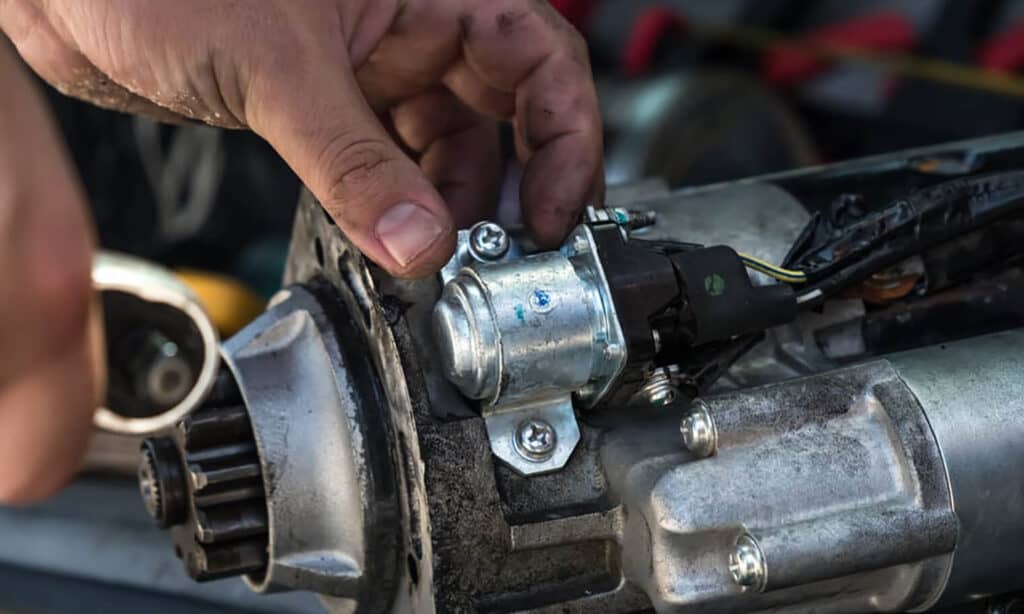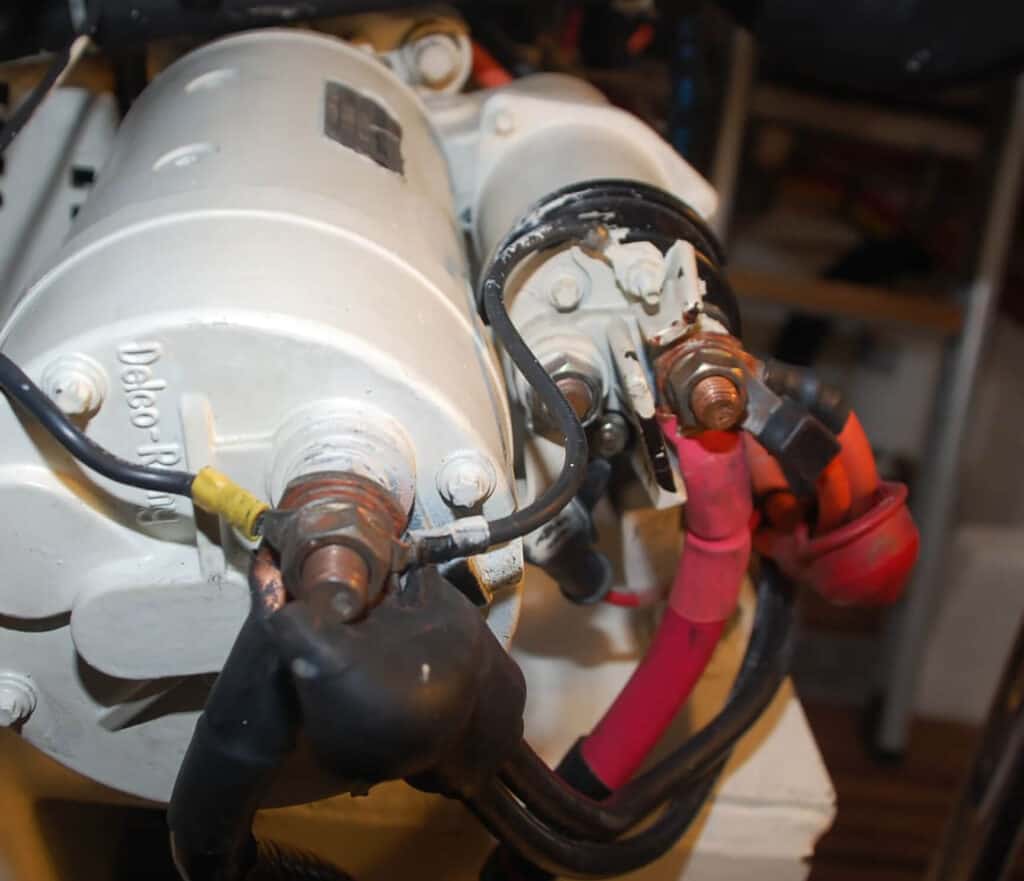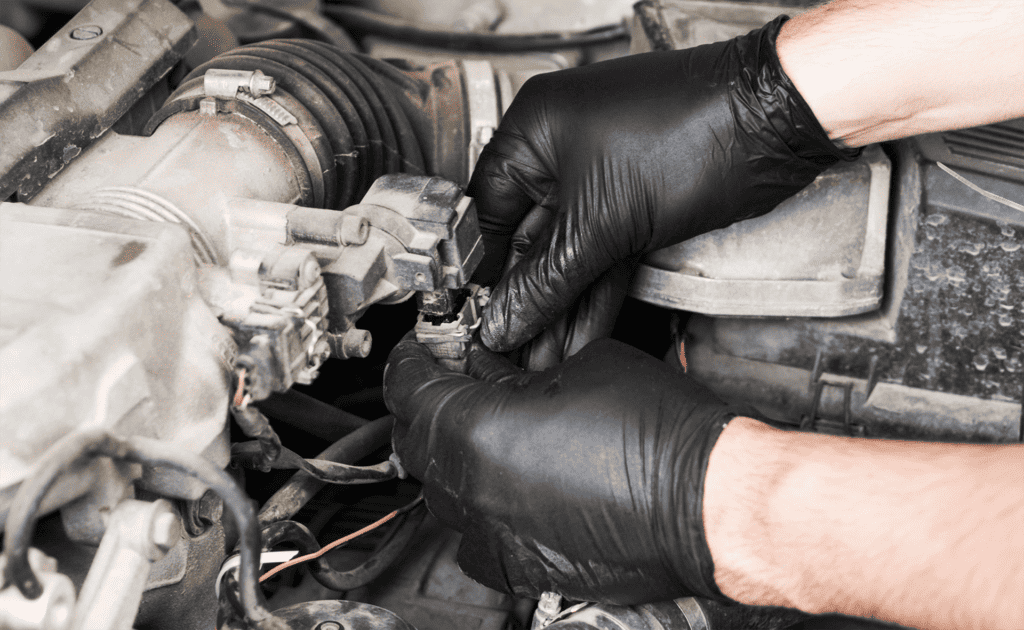Ever wondered why your vehicle groans like a bear in winter when you turn the key? Your starter motor might be crying for attention! Understanding the basics of starter motor maintenance can keep your car running smoother and longer.
Starter Motor Maintenance Explained: What Does it Involve?
“What does maintenance of a starter motor involve?” This is a question you’ve probably never pondered while sipping your morning coffee. Fear not, for it’s simpler than you’d think. Like taking care of a pet, it requires a good routine and some tender loving care.
First off, cleanliness is crucial. Dust and grime build-up can cause your starter motor to underperform. Regular cleaning using a cloth and suitable cleaning solution can keep these harmful elements at bay. But do remember to disconnect the battery before diving into the cleaning process. Safety always comes first, and we don’t want any shocking surprises!

Then, it’s crucial to check for signs of wear and tear. If you hear unusual noises when starting your car or if it requires multiple attempts to start, it could indicate an issue with your starter motor. Regularly inspecting the wiring for any corrosion or fraying can help detect potential issues early on.
Lastly, don’t forget to check the oil. Certain parts of the starter motor need lubrication for smooth operation. Using the right oil can increase the life expectancy of a starter motor. So, break out your oil can and get to lubricating!
Key Components of a Starter Motor: A Focus on Maintenance
“The important parts of a starter motor? Isn’t it just one thing?” Nope, it’s like a miniature mechanical orchestra, each part playing its crucial role. Let’s break it down to four primary components: the motor itself, the solenoid, the drive gear (or pinion gear), and the starter relay or ignition switch.
• The motor: This is the heart of the starter system. Like any motor, it needs to be kept clean, free from dust and grime. Regularly cleaning and lubricating this component can keep it in tip-top shape.
• The solenoid: It acts like an efficient electrical relay, transferring electricity to the motor while ensuring the drive gear engages correctly. Keeping this electrical wonder in good shape involves checking for any frayed wires or loose connections.
• The pinion gear: This component meshes with the engine’s flywheel to crank it up when starting. Wear and tear can show up as chipped or damaged teeth on the gear, which would require replacement.
• The ignition switch/starter relay: This is where your key goes in. Regular use can lead to wear and tear. If you’re having trouble turning the key or if the switch is loose, it might be time for some maintenance.
Remember, maintenance of these components will not only extend the lifespan of your starter motor but also ensure a smoother ride. Because a well-cared-for starter motor is a happy starter motor!
Preventive Measures: Identifying and Addressing Common Causes of Starter Motor Failure
“Can anything be done to prevent starter motor failure?” Absolutely! A dose of preventive care can spare you many headaches, not to mention potential repair costs.
The most common cause of starter motor failure is heat damage. Prolonged exposure to high temperatures can wear down your starter motor over time. To prevent this, avoid unnecessary short trips that don’t allow your car’s engine to fully cool down.
Electrical issues, such as a weak battery or poor wiring, are also common culprits. A weak battery won’t provide enough power to your starter motor, causing it to work harder than necessary. Ensure your battery is in good condition and the connections are clean and secure.
Finally, improper installation can lead to premature failure. If the starter motor is not correctly aligned with the engine, it can lead to wear and tear on the gears. Always ensure that any work on your starter motor is done by a professional or, if you’re doing it yourself, follow the manufacturer’s instructions to a tee.
By addressing these common issues, you can extend the life of your starter motor and keep it purring like a kitten.
Demystifying the Starter Motor: Four Main Components to Know
Ready to become the life of the party with your mechanical knowledge? Let’s peel back the hood and delve into the starter motor’s main components.
• The motor itself: This is the powerhouse that converts electrical energy into mechanical energy to start your car. Keeping it clean and well-lubricated is key to a long and happy life.
• The pinion gear: Also known as the drive gear, this little guy meshes with your engine’s flywheel to crank it up. If it’s damaged or worn out, it could lead to starting issues.
• The solenoid: Think of it as the starter motor’s personal assistant. It carries current from the battery to the motor and also pushes the pinion gear into the flywheel. Regular checks for any loose connections or worn-out wires can keep it in good shape.
• The ignition switch: This is where the magic starts. When you turn the key, it activates the starter relay, which in turn powers up the solenoid and the motor.
By getting to know these components, you can better understand how your starter motor works and ensure it stays in top condition. Remember, knowledge is power!

DIY Tips: How to Clean Your Starter Motor
Looking to flex your DIY muscles? Cleaning your starter motor can be a satisfying task, and it’s not as daunting as it might seem. Here are some basic steps to get you started.
• First, always disconnect the battery. It’s the golden rule of working on any part of your car’s electrical system. Safety first!
• Next, remove the starter motor from your vehicle. This typically involves disconnecting the electrical wires attached to it and unscrewing it from the mounting bracket.
• Once you have the starter motor out, it’s time to get cleaning. Use a soft, dry cloth to wipe away any surface dirt or grime. For tougher stains, you can use a mild detergent and a soft brush. Avoid using any harsh chemicals or abrasive materials, as these can damage the starter motor.
• Finally, reattach the starter motor and connect the battery. Then, start your vehicle to ensure everything is working correctly.
Remember, keeping your starter motor clean can help extend its lifespan and keep your vehicle running smoothly.
Pre-Replacement Checks: What to Consider Before Replacing Your Starter Motor
Is your vehicle having trouble starting? Before you jump to the conclusion that your starter motor needs replacing, consider these checks first.
• Test the battery. A weak or dead battery is a common cause of starting problems. Use a multimeter to check the voltage. If it’s below 12.6 volts, you might need a new battery, not a new starter motor.
• Check the electrical connections. Loose or corroded connections can also cause starting problems. Make sure the connections to the starter motor are clean and secure.
• Listen for unusual noises. If you hear a clicking sound when you turn the key, the problem could be with the solenoid, not the starter motor.
Lastly, consider getting a professional opinion. The team at Uchanics can provide a comprehensive inspection to accurately diagnose the issue. Remember, it’s better to treat the cause than the symptoms!
Understanding Costs: How Much Should Starter Replacement Really Cost?
Oh, the dreaded question: “How much is this going to cost me?” If you’ve ever had to face an unexpected repair bill, you know the feeling. But understanding the costs can alleviate some of the sticker shock.
The price tag for starter motor replacement can vary, depending on the make and model of your vehicle and the mechanic’s labor rates. On average, you’re looking at anywhere from $300 to $700, and this includes both the cost of a starter motor remanufactured parts being on the lower end and new parts being on the higher end and the labor to install it. It might seem like a hefty chunk of change, but think about it this way: It’s a small price to pay for the peace of mind that comes with knowing your vehicle will start when you need it to.
Remember, these are just averages. Always ask for an estimate before agreeing to any work, and don’t be afraid to shop around for the best price.
Potential Pitfalls: Can You Ruin Your Car Starter?
You bet! Improper care and maintenance can lead to a prematurely ruined starter. And it’s not just the obvious things like physical damage. Things like heat damage from prolonged cranking, electrical issues from poor maintenance, and water damage can all send your starter motor to an early grave.
That’s why it’s so important to understand the signs of a failing starter motor, including grinding noises, freewheeling (when you hear a whining noise from the engine but it doesn’t crank), or smoke (a clear sign of too much power being drawn through the electrical supply to the starter).

Remember, preventative maintenance is always cheaper than a replacement. Take good care of your starter, and it’ll return the favor by providing reliable service for years to come.
Conclusion: Empower Your Automotive Knowledge for Better Maintenance
Your car takes you from point A to point B, but it doesn’t have to be a mystery box. By understanding more about starter motor maintenance, you can ensure a smoother ride, save on unnecessary repair costs, and even extend the life of your car. Now, that’s what we call empowerment!
Remember, when in doubt or in need of professional help, Uchanics, your trusty mobile mechanic, is just a call away!
Stay tuned for the next installation of our “Inside Scoop” series. Until then, safe travels, and keep those motors running!
